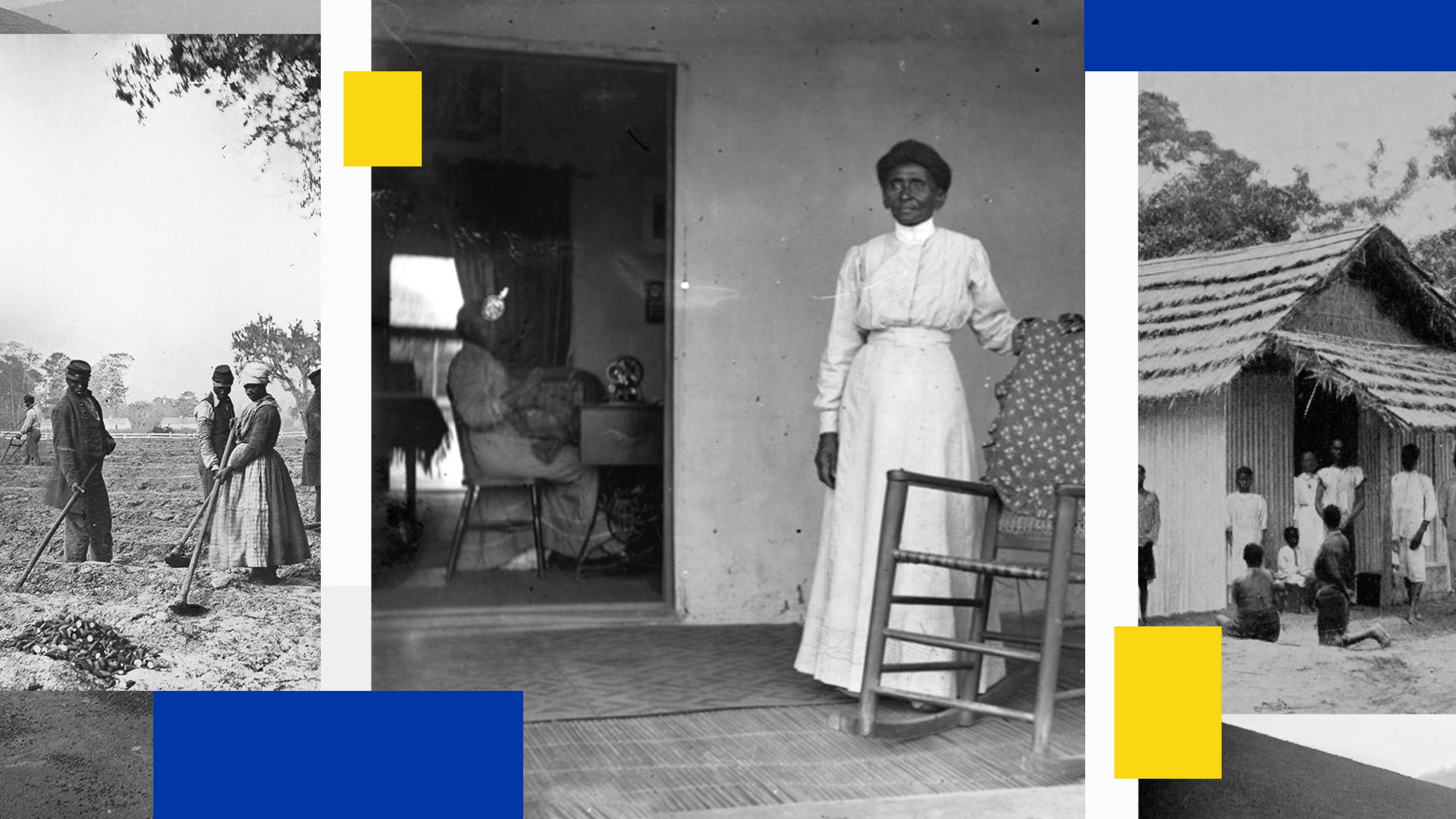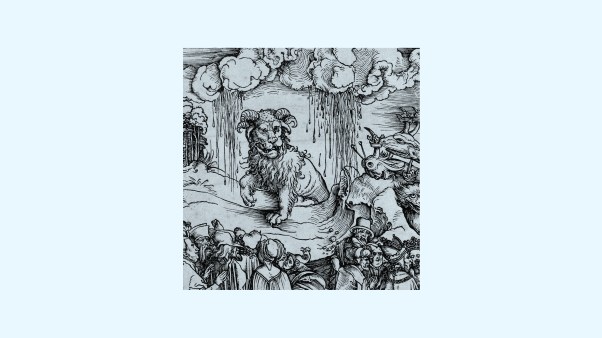At the turn of the 20th century, the Congo Free State was one of the hardest places to be a human. For several decades, Belgian soldiers and business owners brutalized thousands of Congolese locals. They pursued rubber profits at whatever cost, taking the lives of men, women, and children who were forced to serve the whims of King Leopold.
During this time, an American missionary, Maria Fearing, ran Pantops Home for Girls, one of the region’s few places of sanctuary. Using her own salary and donations from her supporters, Fearing created a place in Luebo, Congo, where several dozen girls received a comprehensive education and heard about Christianity for the first time. Fearing’s students nicknamed her Mama wa Mputu (“mother from far away”) to show their love and appreciation.
As a young child growing up enslaved on an Alabama plantation, Fearing had no idea that the God who created her would liberate her from physical and spiritual slavery, or that she would one day travel across seas to the shores of Africa, carrying that message of freedom and new life to those who lived on the same continent as her ancestors.
The “homeland”
In 1836, Mary Fearing gave birth to a baby girl that she and her husband Jesse named Maria (Ma-rye-ah). The Fearing’s lived outside of Gainesville, Alabama, and their daughter arrived just shy of thirty years before legal emancipation and the obliteration of the chattel slave system. Historians know little of Maria’s childhood and her family life while she was enslaved, but it’s believed that she had faith in Christ at an early age, as Four Presbyterian Pioneers in Congo and Maria Fearing, A Mother to African Girls both note.
Her family shared Scripture, Bible stories, and the character of God with her, while the Winston family who claimed ownership over them taught her Presbyterian catechism. From both sides, she heard tales of missionaries in Africa. These stories of “mission work” in a “homeland” she had never known, nevertheless impressed her with a burden she would never be able to shake.
“I will go to Africa someday if I can,” she prayed.
After her legal emancipation in 1865, Fearing studied at the Freedman’s Bureau School in Talladega while supporting herself as a seamstress. Newly-freed people made education a high priority and teacher-training schools popped up across the south to satisfy the hunger for education. Many of these schools later became what we today know as historically black colleges and universities, or HBCUs, which for years provided education for those whom predominately white institutions denied.
After completing her education, Fearing became a teacher. As an older, hard-working single woman committed to Christ, she became a valuable and industrious citizen who made vital contributions to the community and the local church.
Fearing was promoted to assistant matron of the boarding department of Talladega College. She paid a student’s tuition through the college. She even purchased her own home in Anniston, Alabama.
Yet the stories she had heard about Africa continued to pull at her heart. As a woman of deep faith, she probably prayed often for God to make sense of this burden she felt for a place she had never seen.
 Mallory Rentsch / Sources: WikiMedia Commons
Mallory Rentsch / Sources: WikiMedia CommonsOne day at work, Fearing heard a presentation from a group of missionaries living out their faith among the indigenous people of the Free State of Congo.
Presbyterian missionaries William and Lucy Sheppard, the first African American-led mission team sent from America, had an announcement: They were searching for volunteers to join their work in the Congo.
Fearing believed Sheppard’s invitation was the answer to her lifelong prayer. It didn’t matter that the mission board questioned her age– 56– and her ability to handle Central Africa’s tropical climate. She sold her home and belongings, bade farewell to her beloved students, and set off to the African continent.
She and the Sheppard team, which included Alonzo and Althea Edmiston and other African American missionaries, traveled from New York to West Africa by steamer, then sailed 1,200 miles up the River Congo for two months before arriving at the Luebo mission station.
Another unconventional journey
Fearing’s team leader, William Sheppard, was born free in 1865 in Virginia. His father, also free, worked as a janitor in an all-white Presbyterian church and used his salary to send William to the Hampton Institute, another prominent HBCU, where Booker T. Washington was one of William’s instructors. After graduating in 1883, he attended the Tuscaloosa Theological Seminary (now Stillman College) to become a pastor.
Sheppard was ordained a minister in the Presbyterian Church in the United States (PCUS) (originally the Presbyterian Church in the Confederate States of America and the granddaddy of the Presbyterian Church in America). While serving as the pastor of Zion Presbyterian Church in Atlanta, he felt a growing burden to serve in Africa.
After pastors who were still entrenched in Confederate ideology repeatedly denied his applications to mission work, he traveled to the PCUS headquarters to confront the mission board face to face. They finally accepted his proposal to go to the Congo as a foreign missionary, but under one condition: A white missionary must supervise him.
Sheppard countered that he would only take along someone white as a co-laborer and brother in Christ, not as a supervisor. A young white minister named Samuel Lapsley volunteered to go on these biblical terms. The two sailed to the Congo in 1890, defying the mission board and treating each other as equals. When Lapsley died of a fever after only two years on the field, it was a deep loss for Sheppard, who counted him as a friend and brother.
Nevertheless, Sheppard stayed the course. He married his wife Lucy and together they learned the native language of the Bakuba people of Congo.
Life under Leopold
Fearing knew she was entering a volatile situation in the Congo. The territory had just seen a bloody war in 1893, when Belgian Colonial ruler King Leopold II’s forces clashed with Arab traders who also wanted access to the area’s natural resources.
 Mallory Rentsch / Sources: WikiMedia Commons
Mallory Rentsch / Sources: WikiMedia CommonsIn 1885, the European partition of Africa gave the Congo to Leopold. His eventual victory over Arab forces gave him total control over the Sheppard team’s destination: the Congo Free State.
Leopold presented himself as eager to bring the benefits of Christianity and Western civilization to his new territory, but it was a ruse that exploited both the gospel and the people. Instead of benefitting the Congolese, he brutalized them, using them as forced labor to supply the global demands for rubber and ivory.
By the time his reign of terror in the region ended in 1908, death toll estimates rose as high as 10 million people.
Sheppard team achieved worldwide fame when they helped expose the dictator’s human rights abuses to the international press, as William E. Phipps’s William Sheppard: Congo's African American Livingstone and Pagan Kennedy’s Black Livingstone: A True Tale of Adventure in the Nineteenth-Century Congo recount.
When the Sheppard’s were recalled to the States due to indiscretion on William’s part, Fearing and the Edmistons remained in the Congo and doubled down on their ministry. Fearing helped Althea create and publish a dictionary and grammar for the local language, and translate portions of the Bible into the Bakuba language.
The spiritual mother
Though Fearing never had biological children, her experiences in the Congo watered a heart that blossomed into spiritual motherhood. In 1901, she wrote in the local Kassai Herald Journal that her Luebo neighbors “took great pride in telling us about their parents,” and were eager to share about their lives.
She tells of hearing the cries of a newborn whose very young mother was trying to feed the four-day-old infant large amounts of kwanga, or bread. “I felt sorry for the little creature,” Fearing wrote, with deep empathy for both baby and mom.
These maternal seeds came to full flower when Fearing asked local families to allow their daughters to board at her home to protect them from Leopold’s forces. She promised to educate and encourage them to live for Christ. As word got out about Fearing’s efforts, more and more families sent their young girls to live at the mission.
Fearing also paid the ransoms of kidnapped children, enslaved children, and children trapped in the rubber and ivory trades. She purchased their freedom through goods like scissors, cloth, salt, and other items, and soon she was housing more than 40 young women. Through her own money and donations from her supporters, Fearing constructed a multi-room house, where she established a community where the girls took care of one another and attended a missionary day school to learn how to read and write.
For more than 20 years, Fearing worked tirelessly among the children of the Congo. When she turned 78—teeth all gone and eyesight failing—her denomination gently encouraged her to retire. She returned to the United States to the sight of loved ones greeting her at the New York harbor and in her Alabama hometown. The many years apart had not dulled their affection or admiration, and though she deeply missed life in Luebo, witnesses said the joy of reunion was palpable.
In 1918, the Southern Presbyterian Church honored Fearing in the Alabama Women’s Hall of Fame. Though she longed to return to the Congo and be buried there, she contented herself with teaching at her church school in Selma.
In 1937, at 99 years old, Christ called Mama wa Mputu home. Surrounded by her loving nieces and nephews, she rested from her labors with her name and story finally fulfilled in the greatest genealogical list of all: the Lamb’s Book of Life.
Her dearest friend and teammate Althea Edmiston, who was still serving in the Congo, heard reports that Fearing’s life was in twilight and wrote these words of comfort for their community at home and abroad:
Fully realizing that the end of life is fast approaching, and with that same childlike faith, Miss Fearing is patiently awaiting, calm and fearless, the welcome call of her Lord, and is ever listening to hear the whir and hum of the “Sweet Chariot,” accompanied by a band of angels, singing low, coming for to carry her home.
Epilogue
There’s a common notion that African Americans have been absent from global mission efforts. In reality, there are many people such as Maria Fearing and the Edmistons who dot mission history. Their stories show that African American presence in mission is hardly a new stream, but rather a rich, ongoing flow into which we may step boldly, whether our own mission efforts are local or global. Imperfect yet faithful, they teach us that America’s minorities have richly contributed to the expansion of God’s kingdom. K.A. Ellis is the director of the Center for the Study of the Bible & Ethnicity at Reformed Theological Seminary in Atlanta and author of Maria Fearing: The Girl Who Dreamed of Distant Lands. She holds master’s degrees from Yale University and Westminster Theological Seminary and is an advocate for the global persecuted church.














